Cheating at Tea-Totaling – The Tea-Totaler Trilogy, Part 1
In December of last year, I gave up drinking. The reason? A missing hubcap.

I hit a curb while driving a wee bit sauced. No idea where said hubcap went. My theory’s Narnia.
My poor car was the impetus for what (originally) began as a year-long dry-spell experiment. However, in the ensuing six months, life turned out . . . rather awesome. Not sure what happened, and I’m not sure I owe it to sobriety or something else. Life kinda kicked ass. That and having that extra money in my khaki pants was rather nice.
I will confess, though, that I have been cheating a bit. I’ll explain . . .
In November of last year, I did a DIY experiment – aging black tea in a bourbon barrel. I pulled the stuff out after week, declared it “almost” a success, and did it a second time for much longer. That one wasn’t as much of a success. However, my trials and errors caught the attention of this smiling mad scientist – one TJ Williams, one-half of The Tea Kings.

February of this year rolled around, and I looked at his company’s website and saw – in bold letters: “Cask Aged Dian Hong”. They had aged a bunch of Yunnan black tea leaves in a 1-liter micro-barrel for a period of time. Said micro-barrel had previously housed . . . Appleton Estates spiced rum.
I messaged him about it, “Spiced rum barrel-aged Dian Hong?! Whaaaaaaaaa?!”
He confirmed it, rather proudly. I mentioned in passing that I had done something similar with a bourbon micro-barrel. He responded with, “T’was my inspiration.”
This marks the third time one of my weird blogs had let to a vendor’s future experiments. Shortly after that dialogue, I received both the Cask Aged Dian Hong, and another one – a bourbon barrel-aged Tie Guan Yin. The latter had been aged in a micro-barrel for two weeks, the barrel once being home to Johnny Walker Red.
(Bloggers Note: No alcohol is imparted on tea leaves. Just the scent of what was in the barrel. I swear.)
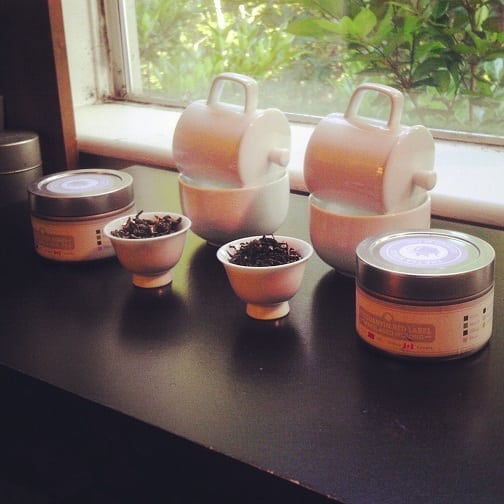
The Tie Guan Yin Red Label leaves looked like many other mid-oxidized, ball-fisted oolongs of its type, but the smell was definitely altered by the bourbon barrel-ing. Along with the usual butter-flower aroma was a presence of peat on the after-whiff. Not strong, but definitely there; adding a dimension of delicious wrong-doing.
The Casked Dian Hong was a surprise and a half. The leaves were smaller-cut than the usual Yunnan black teas I ran into – leaf pieces ranging from brown to gold. What stood out, though, was the smell. Holy booze-gods, the moment I opened the can, straight rum pummeled my nostrils. Not as strong as the alcohol itself, but definitely as sweet and creamy. And that was only after a week of barrel-aging.
For the oolong, I went with a gongfu (or rather, gongfoolish) approach, but with the Dian Hong, I did the usual western-style brew. Both were brewed with boiling water. It was early morning, and I wanted to bleed whatever essence I could out of them.
After three successive infusions – at around thirty-to-forty-five seconds each – the barrel-aged Tie Guan Yin brewed light green with a subtle, herbal aroma.
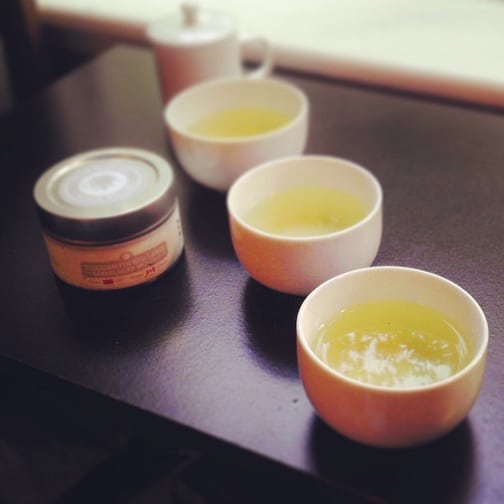
No liquor note on the whiff to speak of. It wasn’t until I sipped each one that I witnessed the barrel contribution. Funnily enough, the oolong began with the subtle, liquor-scented note before transitioning to the usual Tie Guan Yin bells-‘n-whistles of butter and minerals.
As for the Casked Dian Hong . . .
Gaaaaaaaaahhhhhh! Before this, I’d only had one other rum barrel-aged tea. I don’t know what it is about rum, or even traces of rum, but the notes compliment well with tea’s natural, oxidized profile. Yunnan Dian Hongs tend to be on the earthier side anyway with trace sweetness layered throughout (in my experience). It seems only natural that those notes would play well with a malty, sweet, chewy . . . pirate-y rum.
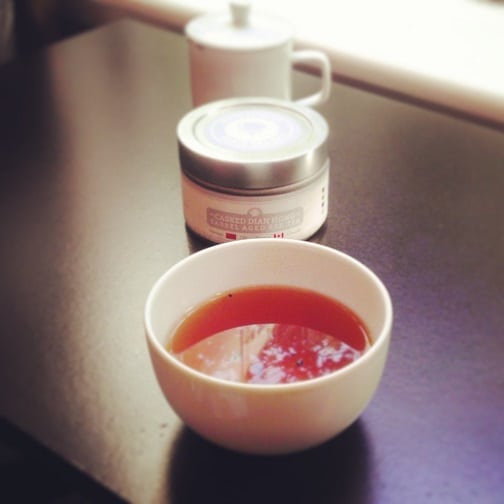
To make a long description short(er), the rum and black tea paired perfectly here. The intro taste was like that of a liquor-filled chocolate, while the rest was like burnt oakwood-smoked ‘s’mores. Soooo much sweetness, sooooo much awesome. I could find something more sophisticated here, but I don’ wanna.
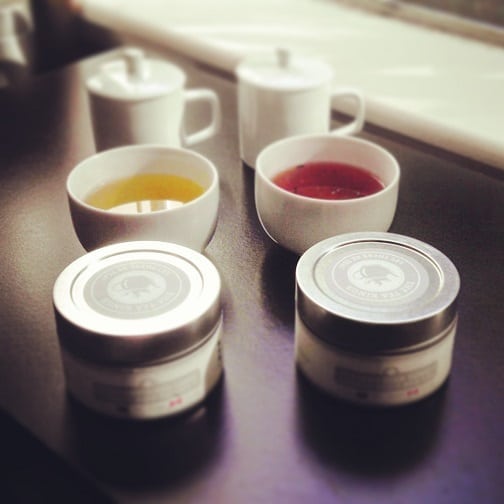
Interesting sidenote: In future brewing sessions with both of these, the longer I steeped them for, the more pronounced the liquor note. It was like the scenting process was born to make love to tea tannins. Or something.
Epilogue
Many months later, I encountered TJ at World Tea Expo 2015. He passed along another rendition of their Cask Aged Dian Hong, but this time it’d aged in the barrel for two weeks rather than one. I decided to do a side-by-side tasting of both versions. The results? (Beyond this cheesy tea haiku.)
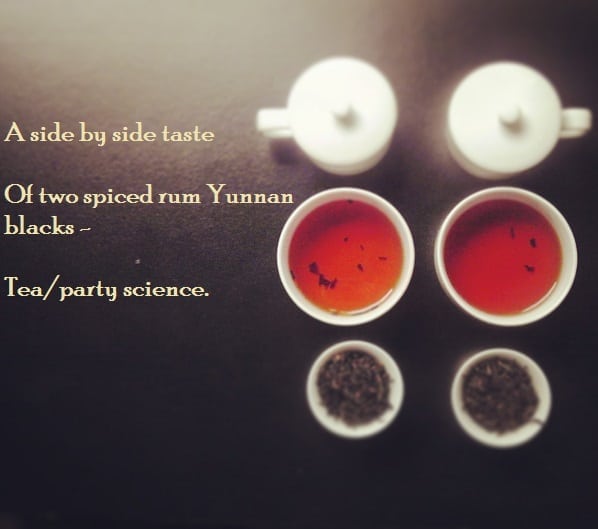
The longer-aged stuff tasted the same as the shorter, but with more of the spice and oak imparted due to the longer wait-time. I could drink it all day. Both of them. At the same time. Double-fisting.
If this is cheating at sobriety, then screw the rules.
Leave a Reply to Xavier Cancel reply